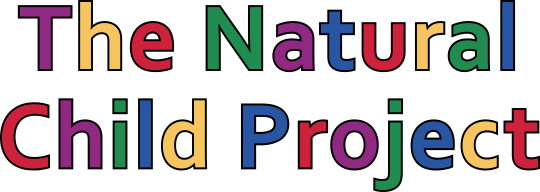The Power of a Smile
As the world comes into focus, vision plays an increasingly important part in relationships. Eye contact now becomes the main source of information about other people's feelings and intentions: feelings are seen on the face. This reliance on faces may have evolved on the African savannah where it was necessary for our primate ancestors to communicate silently so as not to alert predators. This was done through visual means, developing a wide repertoire of facial movements and body language to convey information (Turner 2000). Certainly attentiveness to faces is hard-wired into human beings and is evident even in newborns.
By toddlerhood, the human child has started to use his mother's and father's faces as his immediate guides to behaviour in his particular environment. Is it safe to crawl out of this door? Does Dad like this visitor? This is known as 'social referencing', with the infant using visual communication at a distance to check out what to do and what not to do, what to feel and what not to feel, using the parent's facial expression as his source of information (Feinman 1992).
But according to Allan Schore, looking at faces has an even more powerful role to play in human life. Especially in infancy, these looks and smiles actually help the brain to grow. How does this work? Schore suggests that it is positive looks which are the most vital stimulus to the growth of the social, emotionally intelligent, brain (Figure 2.2).
When the baby looks at his mother (or father), he reads her dilated pupils as information that her sympathetic nervous system is aroused, and she is experiencing pleasurable arousal. In response, his own nervous system becomes pleasurably aroused and his own heart rate goes up. These processes trigger off a biochemical response. First, a pleasure neuropeptide called beta-endorphin is released into the circulation and specifically into the orbitofrontal region of the brain. 'Endogenous' or home-made opioids like beta-endorphin are known to help neurons to grow, by regulating glucose and insulin (Schore 1994). As natural opioids, they also make you feel good. At the same time, another neurotransmitter called dopamine is released from the brainstem, and again makes its way to the prefrontal cortex. This too enhances the uptake of glucose there, helping new tissue to grow in the prefrontal brain. Dopamine probably also feels good, insofar as it produces an energising and stimulating effect; it is involved in the anticipation of reward. So by this technical and circuitous route, we discover that the family's doting looks are triggering off the pleasurable biochemicals that actually help the social brain to grow (Schore 1994).
The baby's brain is doing a lot of growing in the first year - it more than doubles in weight. The enormously increased glucose metabolism of the first two years of life, triggered by the baby's biochemical responses to his mother, facilitates the expression of genes. Like so much else about human development, genetic expression frequently depends on social input to become manifest. The hippocampus, temporal cortex, prefrontal and anterior cingulate are all immature at birth. But the success of their growth and genetic development depends on the amount of good experiences the individual has. Lots of positive experiences early on produce brains with more neuronal connections -more richly networked brains. We have all our neurons at birth, and we don't need to grow any more, but what we do need is to connect them up and make them work for us. With more connections, there is better performance and more ability to use particular areas of the brain.
In particular, between 6 and 12 months, there is a massive burst of these synaptic connections in the prefrontal cortex. They achieve their highest density just when the developing pleasurable relationship between parents and baby is most intense, and attachment bonds are being consolidated. This growth spurt in the prefrontal cortex reaches a final high pitch in early toddlerhood, when the novelty of being able to move independently creates elation in the toddler and pride and joy in his parents. In effect, the baby has now become a social being, with the beginnings of a social brain. But it takes most of the first year to reach this point.
Towards the end of the first year, the preparatory phase of
infancy comes to an end. In some ways, the human baby now reaches
the level of development that other animals achieve inside the
womb. But by doing it outside the womb, human brain building is
more open to social influence. This extended human dependency
outside the womb enables an intense social bond between caregiver
and child to develop. This generates the biochemicals that
facilitate a high level of neural connections and brain growth
which will never be as rapid again. However, connections do carry
on being made throughout life. One demonstration of this was seen
in Einstein's pickled brain which was examined a few years ago by
researchers in Canada. They compared Einstein's brain with other
brains of men who died at a comparable age, and found that
Einstein's brain was 15 per cent wider in the parietal area than
the other brains. The parietal area is the part of the brain
involved in math reasoning and visual-spatial thinking. The
message here is: the more you use it, the more it develops. On the
other hand, if you don't use it, you lose it - the absence of
activity tends to make neurons atrophy like wasted muscles.
Excerpted with permission of the author from Why Love
Matters: How Affection Shapes a Baby's Brain.
Order the book
online
or by phone: +44 (0) 1235 400 524 from
Routledge
Mental Health .




